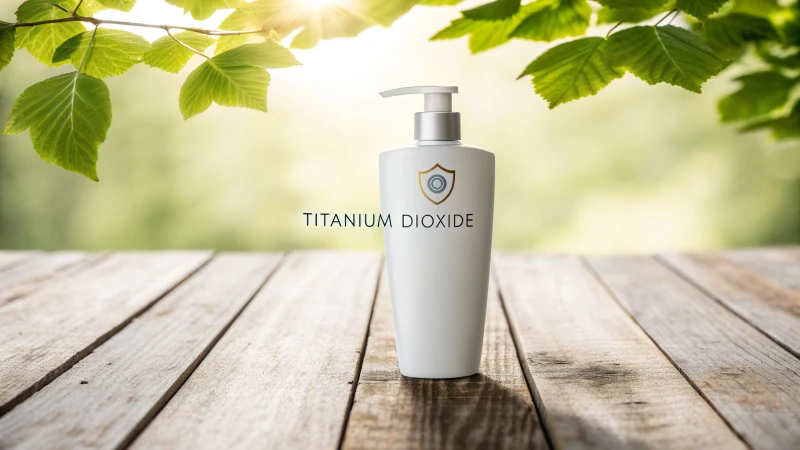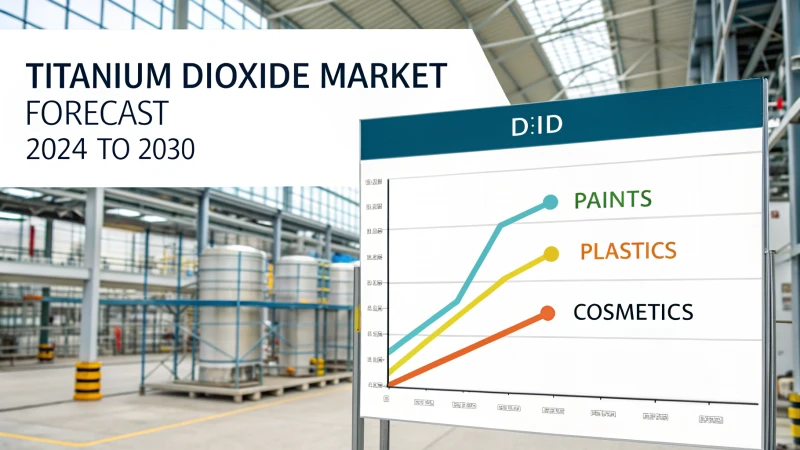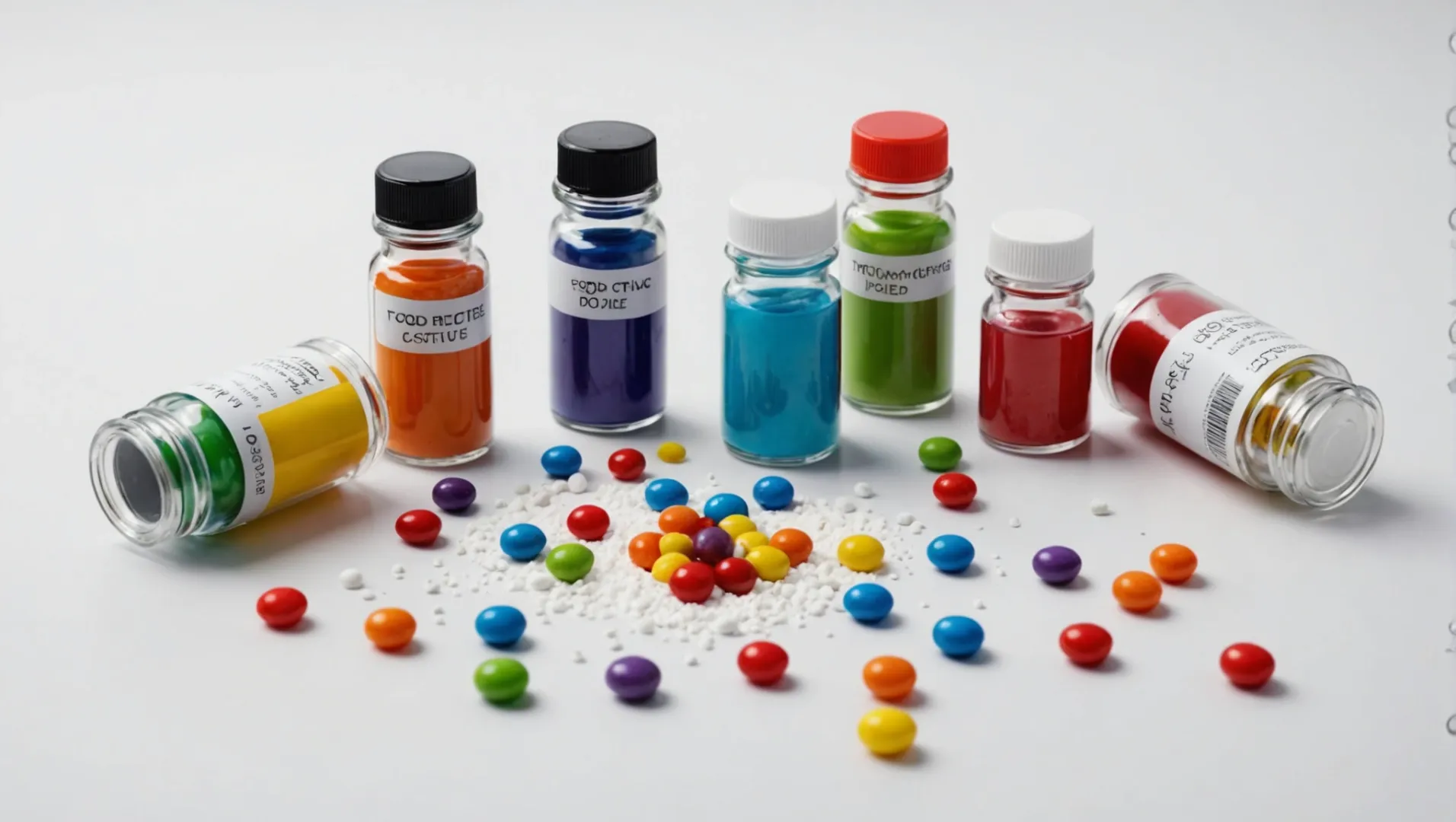
Did you know that titanium dioxide isn’t just a common white pigment? It’s actually a multi-talented player in several industries!
Titanium dioxide is used as a whitening agent in food, a pigment in pharmaceuticals, and a UV protectant in cosmetics. Its safety is debated, particularly in food, where regulations vary globally.
Let’s dive into how titanium dioxide works across these sectors and uncover the ongoing discussions about its safety and regulations. Understanding these aspects can empower you to make informed choices about the products you use every day.
[claim claim=”Titanium dioxide is banned in EU food products.” istrue=”true” explanation=”The European Food Safety Authority banned titanium dioxide as a food additive in 2022.”]
What Makes Titanium Dioxide Effective in These Industries?
Explore how titanium dioxide excels in food, pharmaceuticals, and cosmetics with its unique properties.
Titanium dioxide is effective due to its whitening, opacifying, and UV-reflecting properties, making it versatile for use in food, pharmaceuticals, and cosmetics.

The Versatile Role of Titanium Dioxide in the Food Industry
In the food industry, titanium dioxide (TiO₂) is primarily valued for its high refractive index and chemical inertness. This compound is often employed as a whitening agent, enhancing the visual appeal of food products such as candies, chewing gums, and baked goods. TiO₂’s high opacity ensures a consistent color and appearance, which is crucial for consumer expectations. Furthermore, its non-reactive nature means it does not interfere with the taste or quality of food products.
One must note the ongoing scrutiny over its safety as a food additive. While regions like the U.S. continue to assess its safety, the European Food Safety Authority banned its use in 2022. This highlights regional differences in regulatory approaches and consumer safety priorities.
Pharmaceutical Applications: Ensuring Quality and Consistency
In pharmaceuticals, TiO₂ serves as a pigment for coating tablets and capsules. The primary advantage here is its ability to mask the color of active ingredients, providing a professional and uniform appearance. This not only enhances aesthetic appeal but also assists in drug identification and differentiation.
Another crucial benefit of using titanium dioxide in pharmaceuticals is its stability. It does not react with other components in the medication, ensuring that the drug’s efficacy and shelf life remain uncompromised. Such stability is essential in maintaining the integrity of pharmaceutical products.
Cosmetics: Protection and Enhancement
TiO₂ plays a pivotal role in the cosmetics industry, particularly in sunscreens and makeup. Its capability to reflect and scatter ultraviolet (UV) rays makes it an excellent physical sunscreen agent. Unlike chemical sunscreens that absorb UV rays, titanium dioxide sits on the skin’s surface, providing broad-spectrum protection without absorption—a significant advantage for individuals with sensitive skin.
Moreover, its whiteness and opacity are vital for makeup products like foundations and powders, where it enhances coverage and color consistency. Despite its benefits, there is an ongoing assessment of TiO₂ nanoparticles’ safety in cosmetics, as studies aim to ensure consumer health.
Understanding these applications of titanium dioxide across various industries can provide insight into why it remains a popular choice despite regulatory challenges. To further explore the regional differences in regulations concerning titanium dioxide’s use, see regulatory differences1.
[claim claim=”Titanium dioxide is banned in EU food products.” istrue=”true” explanation=”The European Food Safety Authority banned titanium dioxide in food in 2022.”]
[claim claim=”TiO₂ absorbs UV rays in sunscreens.” istrue=”false” explanation=”Titanium dioxide reflects UV rays, providing physical sun protection.”]
Why Is Titanium Dioxide Controversial in Food Products?
The debate over titanium dioxide in food products raises questions about health and safety.
Titanium dioxide is controversial due to concerns about its potential health effects, leading to regulatory differences globally. The European Food Safety Authority banned it in 2022, citing insufficient evidence on its safety, while other regions continue its use with ongoing evaluations.

Health Concerns and Research
The primary reason for the controversy surrounding titanium dioxide2 in food products is health-related. Some studies have suggested that nano-sized particles of titanium dioxide could accumulate in the body and potentially cause adverse health effects, including inflammatory responses and cellular damage. This has led to concerns over its safety when ingested over long periods.
In response to these concerns, extensive research has been conducted to determine the safety of titanium dioxide as a food additive. While some studies indicate potential risks, others have found it to be safe at the levels typically consumed in food products.
Regulatory Actions Across the Globe
The disparity in regulatory approaches to titanium dioxide in food products further fuels the controversy. The European Food Safety Authority3 (EFSA) banned its use as a food additive in 2022, stating that it could not rule out genotoxicity risks, meaning it might damage DNA and lead to cancer.
In contrast, regulatory bodies in other parts of the world, such as the United States Food and Drug Administration (FDA), have deemed titanium dioxide safe for use in food products under certain conditions. The FDA’s stance is based on the premise that there is insufficient evidence to warrant a ban.
Consumer Perception and Industry Impact
The conflicting regulations have left consumers confused about the safety of titanium dioxide in their food. Many consumers now actively seek products free from this additive, leading some manufacturers to reformulate their products to meet demand.
A survey of consumer preferences showed that a significant portion of consumers prefer products labeled "free from titanium dioxide," influencing how companies market and develop their goods.
| Region | Regulatory Stance |
|---|---|
| Europe | Banned |
| USA | Allowed |
| Australia | Allowed |
Ongoing Discussions and Future Directions
The debate over titanium dioxide’s safety in food products is far from settled. Ongoing research continues to explore the long-term health implications, aiming to provide more definitive answers.
Future regulatory decisions will likely depend on the outcome of these studies. Consumers are encouraged to stay informed about developments and make dietary choices based on personal preferences and available scientific evidence.
[claim claim=”Titanium dioxide is banned in European food products.” istrue=”true” explanation=”EFSA banned it in 2022 due to potential genotoxicity risks.”]
[claim claim=”The FDA has banned titanium dioxide in food products.” istrue=”false” explanation=”The FDA considers it safe under certain conditions, not banned.”]
How Do Regulations Differ Across Regions for Titanium Dioxide Use?
Understanding regional regulations for titanium dioxide is crucial for consumers and industries alike.
Titanium dioxide regulations differ globally due to varying safety assessments and usage guidelines. For instance, the EU has banned its food use, citing health concerns, whereas the U.S. still permits it pending further review. Understanding these differences helps navigate product safety.
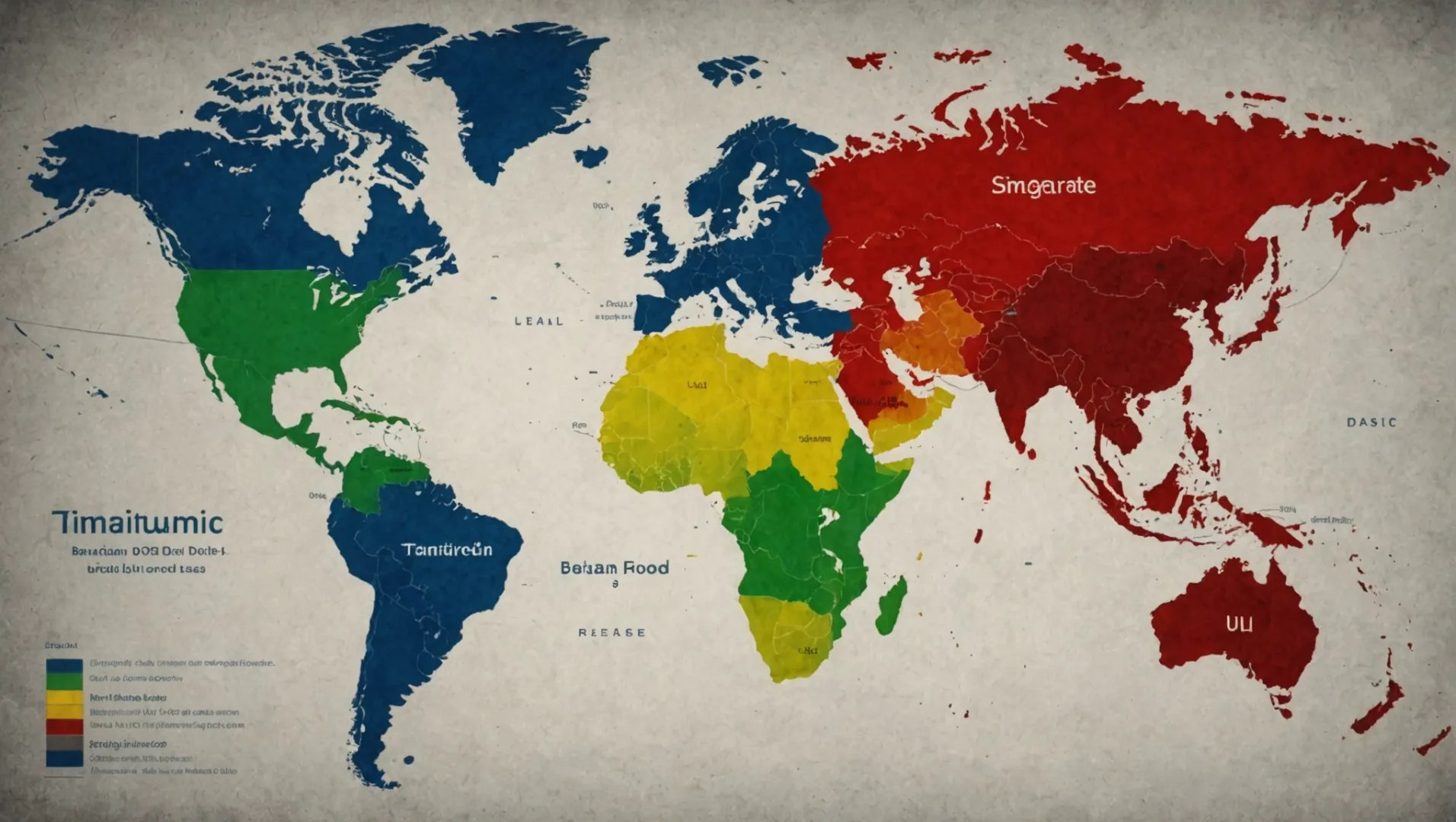
European Union vs. United States Regulations
The European Union (EU) and the United States (U.S.) are two major markets where regulations around titanium dioxide (TiO₂) notably diverge. In 2022, the EU took a significant step by banning the use of TiO₂ as a food additive, driven by concerns over its potential genotoxicity, which refers to its ability to damage DNA. The European Food Safety Authority (EFSA) deemed the compound unsafe for consumption in food products due to insufficient evidence proving its safety when ingested.
Conversely, in the U.S., the Food and Drug Administration (FDA) continues to approve TiO₂ as a safe food additive, allowing its use at levels up to 1% of the food’s weight. The FDA’s stance is based on existing studies that have yet to conclusively demonstrate harmful effects at the current permissible levels. This discrepancy highlights the broader differences in how regions assess and regulate chemical additives.
| Region | Regulation on TiO₂ in Food |
|---|---|
| EU | Banned as of 2022 |
| U.S. | Permitted up to 1% weight |
Variances in Pharmaceutical and Cosmetic Sectors
While food regulations are contentious, both regions exhibit less variance in pharmaceutical and cosmetic applications. TiO₂’s use in pharmaceuticals as a colorant remains largely unchallenged across different jurisdictions. Similarly, in cosmetics, particularly sunscreens, TiO₂ is globally recognized for its effectiveness as a UV protectant.
Nevertheless, discussions about nano-sized particles of TiO₂ have gained attention. The EU mandates labeling for nanoparticle presence, reflecting consumer safety concerns and preferences for transparency. In contrast, U.S. regulations are less stringent regarding nanoparticle disclosure.
Asia-Pacific and Other Regions
In Asia-Pacific countries, regulations tend to align more closely with either EU or U.S. standards, but there are unique regional nuances. For example, Japan maintains rigorous testing protocols for TiO₂ used in food products but has not yet moved towards a complete ban.
Australia follows suit with stringent checks but permits its usage under regulated conditions. In many developing nations, regulatory frameworks are still evolving, and oversight might not be as robust, leading to varied enforcement of safety standards.
Understanding these regional differences is crucial for global businesses4 looking to navigate international markets and for consumers who wish to make informed decisions about the products they consume or use daily.
[claim claim=”The EU banned titanium dioxide in food in 2022.” istrue=”true” explanation=”The EU banned TiO₂ as a food additive due to health concerns.”]
[claim claim=”The FDA allows titanium dioxide up to 5% in food.” istrue=”false” explanation=”The FDA permits TiO₂ up to 1% of the food’s weight.”]
What Should Consumers Know About Titanium Dioxide Safety?
Titanium dioxide is widely used but has sparked safety debates worldwide.
Titanium dioxide’s safety, especially in food, is debated due to potential health risks. While the EU has banned it as a food additive, other countries continue to review its safety. Consumers should stay informed about regional regulations and potential risks when using products containing titanium dioxide.
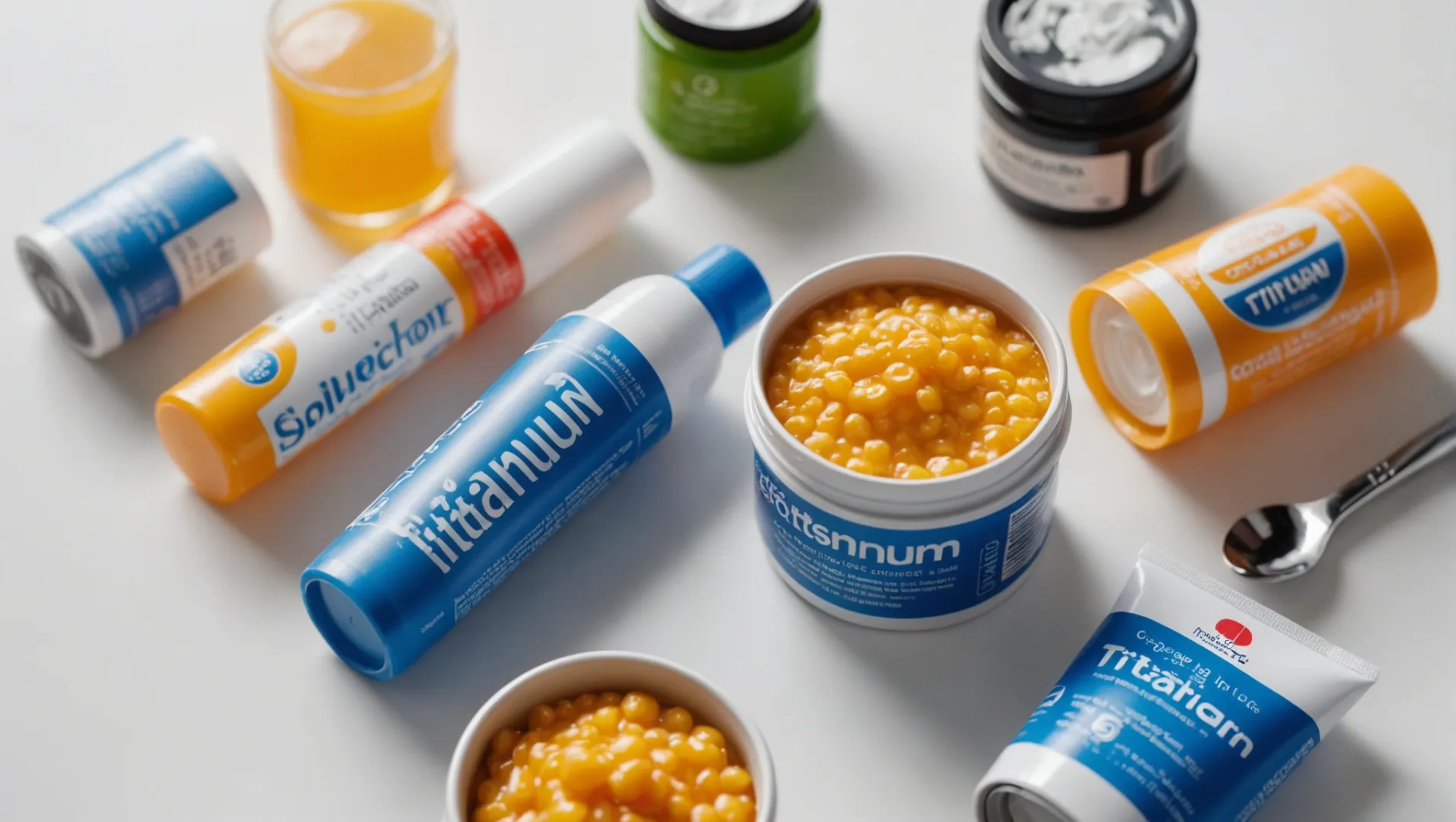
Understanding Titanium Dioxide’s Role in Daily Products
Titanium dioxide (TiO₂) is a compound that consumers encounter daily, often without realizing it. It is present in various products, from the toothpaste you use in the morning to the sunscreen applied for UV protection. Its non-reactivity5 makes it ideal for enhancing product appearance and stability, but its safety continues to prompt significant discussion.
Safety Concerns in Food Products
The debate over titanium dioxide’s safety is most pronounced in the food industry. The European Food Safety Authority (EFSA) raised concerns about potential health impacts, leading to a 2022 ban on its use as a food additive within the European Union. These concerns primarily revolve around TiO₂’s nanoparticle form, which may pose risks when ingested. However, other regions like the U.S. have not yet reached a consensus on its prohibition, suggesting more research is needed.
Regulatory Differences Across Regions
Understanding where you reside can significantly impact your exposure to titanium dioxide. While the EU has taken a precautionary stance by banning its use in foods, countries such as the U.S. and Australia continue to allow it, albeit under scrutiny. This divergence highlights the importance of being aware of local regulations and any updates regarding TiO₂’s permissible uses.
| Region | Regulation Status |
|---|---|
| European Union | Banned in foods |
| United States | Under review |
| Australia | Permitted with caution |
Risks and Recommendations for Consumers
Consumers should be aware of titanium dioxide’s presence in various products and make informed decisions about their use. Given the ongoing debates, those concerned about potential risks might choose alternatives when available or limit consumption of items known to contain TiO₂. Checking product labels and staying updated on scientific findings and regulatory changes is advisable for health-conscious consumers. Explore regional guidelines6 to stay informed about titanium dioxide regulations where you live.
[claim claim=”Titanium dioxide is banned in EU food products.” istrue=”true” explanation=”The EU banned titanium dioxide as a food additive due to safety concerns.”]
[claim claim=”The U.S. has banned titanium dioxide in food products.” istrue=”false” explanation=”The U.S. has not banned titanium dioxide in foods; it’s under review.”]
Conclusion
Titanium dioxide remains essential in food, medicine, and cosmetics. As research evolves, staying informed ensures safe consumption and use.
-
Discover global perspectives on titanium dioxide regulation for informed decision-making.: The FDA allows for the safe use of TiO 2 as a color additive in foods according to the specifications and conditions. ↩
-
Discover research findings on titanium dioxide’s health impact.: At present, titanium dioxide is classified by the International Agency for Research on Cancer (IARC) as a 2B-type carcinogen, equivalent to “possibly … ↩
-
Understand why EFSA banned titanium dioxide in food.: 5. Is EFSA banning titanium dioxide? No. EFSA’s role was limited to evaluating the risks linked to titanium dioxide as a food additive. This … ↩
-
Explore how global businesses navigate diverse TiO₂ regulations.: Titanium dioxide ban in Europe: Europe restricts use, while global standards vary. ↩
-
Learn how its stability benefits product formulation.: Titanium dioxide (TiO 2 ) is considered as an inert and safe material and has been used in many applications for decades. ↩
-
Understand local rules to make informed product choices.: The FDA allows for the safe use of TiO 2 as a color additive in foods according to the specifications and conditions. ↩




